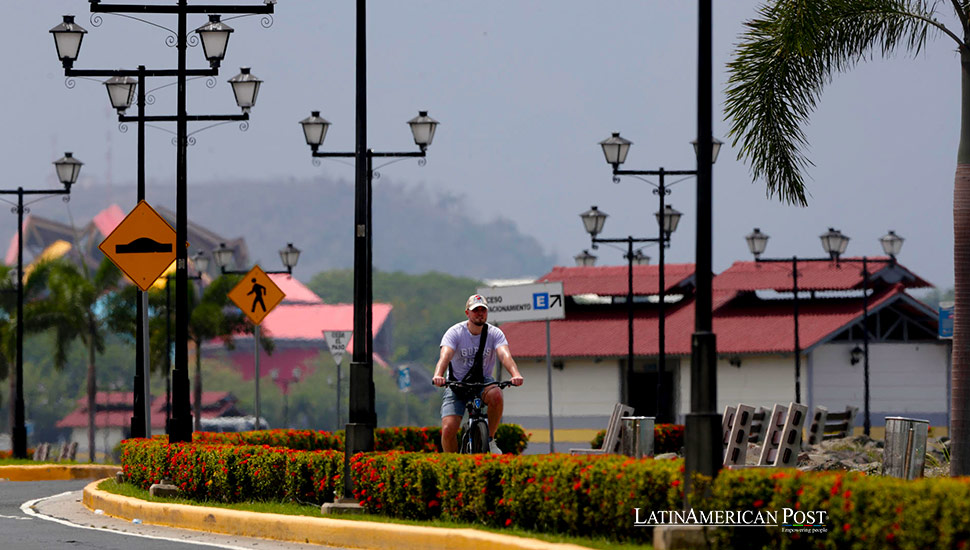Warmer Nights as Climate Change Impacts Panama

As Panama faces increasingly warm nights and heightened temperatures, the implications for its ecosystem and residents grow more severe, challenging both daily life and environmental stability.
In the tropical heart of Central America, Panama is witnessing a significant shift in its climatic patterns, marked by rising temperatures and warmer nights. This trend not only disrupts the daily lives of its citizens but also signals more profound environmental changes. According to Luz Graciela de Calzadilla, director of the Institute of Meteorology and Hydrology of Panama (IMHPA), the country has experienced a noticeable increase in maximum and minimum temperatures over the past four decades.
Rising Temperatures Threaten Panama’s Biodiversity and Vital Infrastructure
This climatic shift is particularly concerning in Panama, a country characterized by its rich biodiversity and strategic geographic position, hosting the iconic Panama Canal. The increase in temperatures, especially noted in 2023 as one of the warmest years not only in Panama but globally, raises alarms about the broader impacts of global warming.
The study conducted by IMHPA highlights an upward trend in temperatures from the cool mountainous regions to the warm coastal areas. For instance, daily maximum temperatures have ranged from a chilly 21.7 degrees Celsius in the highlands to a scorching 39.8 degrees near the coast. Such variations significantly affect local weather patterns, influencing everything from agricultural practices to urban planning.
In regions like Chiriquí, Darién, Los Santos, and Veraguas, the heat is more intense, with Veraguas recording a peak temperature of 38 degrees Celsius on April 14, 2023. These rising temperatures strain natural ecosystems and pose health risks to the population, exacerbating conditions like heatstroke and dehydration.
Shift in Nocturnal Temperatures: Challenges and Disruptions
Moreover, the nocturnal temperatures across Panama, except for more excellent areas like Bocas del Toro and Chiriquí, now average between 22.4 and 25.8 degrees Celsius. This shift towards warmer nights disrupts sleep patterns and complicates life for those without access to cooling technologies, increasing energy consumption as more people rely on air conditioning.
Looking ahead, climate models predict further temperature increases. Under the Shared Socioeconomic Pathways (SSP) 8.5 scenario, which assumes high greenhouse gas emissions, temperatures in Panama could rise by an additional 0.5 to 2 degrees Celsius by 2045 and dramatically by 3 to 7 degrees by the end of the century. These projections underscore the urgent need for robust climate adaptation strategies.
The impending La Niña phenomenon, expected in the second half of 2024, introduces another layer of complexity. While typically associated with cooler ocean temperatures in the Pacific and increased rainfall for Panama, La Niña could provide temporary relief from the heat. However, as risk prevention and disaster response expert Omar Smith noted, this increased precipitation poses challenges, including potential flooding and landslides.
These heavy rains are a double-edged sword. On one hand, they replenish the artificial lakes that feed the Panama Canal and supply drinking water to over half of Panama’s population. Conversely, they increase the risk of severe flooding and landslides, particularly in areas with poor infrastructure or vulnerable terrain.
A Reflection of Latin America’s Challenges
The situation in Panama is a microcosm of the broader environmental challenges facing Latin America. The region, characterized by vast biodiversity and a dependency on natural resources, is particularly vulnerable to climate change. Countries throughout the region are grappling with similar issues, from deforestation and biodiversity loss to urban heat islands, affecting significant cities’ living conditions.
As Panama navigates these climate challenges, the need for international cooperation and local resilience becomes apparent. Strategies such as enhancing green infrastructure, improving water management systems, and investing in sustainable urban planning are critical. Moreover, public awareness and education on climate change must be prioritized to empower communities to take action.
Also read: The Thirst of Progress: Panama Canal’s Water Crisis and Latin America’s Environmental Warning
The fight against climate change in Panama and across Latin America is about adapting to inevitable changes and mitigating future risks through proactive environmental stewardship and policy-making. As temperatures continue to rise, the response of nations like Panama will set precedents for how tropical and biodiverse-rich regions around the world address the multifaceted challenges of a warming planet.




